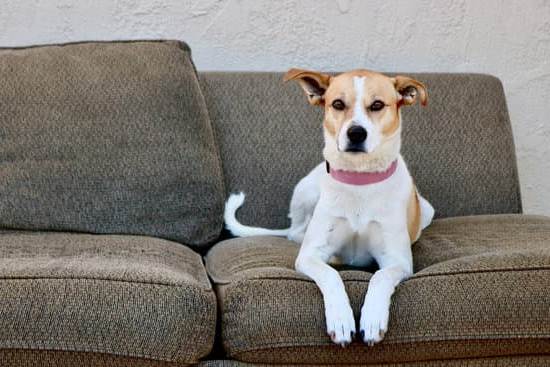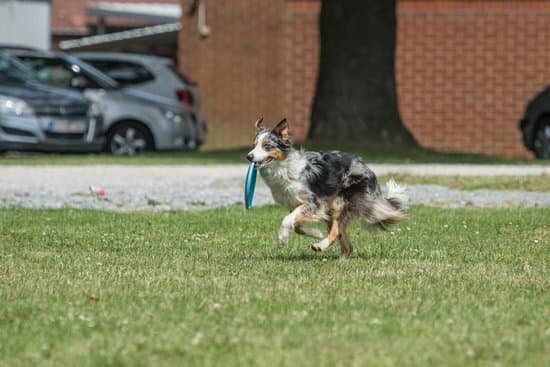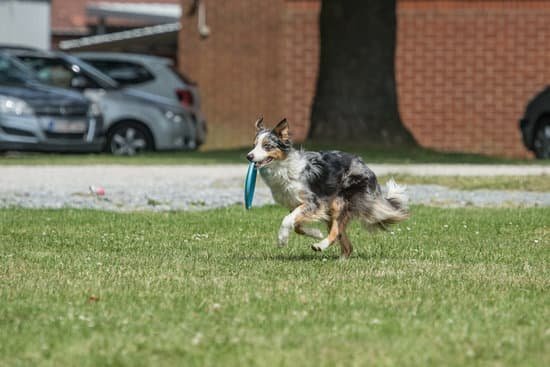Are you struggling with how to train a defiant dog? Many dog owners find themselves frustrated and overwhelmed when faced with a dog that exhibits stubborn or defiant behavior. Understanding the reasons behind your dog’s defiance and learning effective training techniques can make all the difference in transforming your pet’s behavior.
Defiant behavior in dogs can range from refusing to listen to commands, displaying aggression, and engaging in destructive behavior. It’s essential to distinguish between normal canine behavior and defiance, as this will dictate the approach you take in training. By identifying the specific behaviors that classify as defiant, you can tailor your training methods to address these issues effectively.
Positive reinforcement training techniques have been proven to be highly effective in shaping a dog’s behavior, particularly when dealing with defiance. This approach involves rewarding desirable behaviors and ignoring or redirecting undesirable ones. By implementing positive reinforcement in daily training sessions, you can encourage your defiant dog to adopt more obedient behaviors over time.
Identifying Defiant Behaviors
When training a defiant dog, it is essential to first identify the behaviors that are causing issues. Understanding the signs of defiance can help you tailor your training methods to address specific problem areas. Here is a comprehensive list of common defiant behaviors exhibited by dogs:
- Refusing to listen: This behavior may manifest as ignoring commands or cues from the owner, such as sit, stay, or come when called.
- Aggression: Defiant dogs may display aggressive behavior towards people or other animals, including growling, lunging, or biting.
- Destructive behavior: Dogs may exhibit defiance through destructive behavior such as chewing furniture, digging up the yard, or tearing up household items.
- Resource guarding: Some dogs may show defiance by guarding their food, toys, or other possessions and displaying aggression when approached.
- Pulling on the leash: Dogs that constantly pull on the leash during walks despite training efforts may also be exhibiting defiant behavior.
Recognizing these behaviors is the first step in addressing defiance in your dog. Once you have identified which specific behaviors need to be addressed, you can tailor your training approach accordingly.
It’s important to note that defiance in dogs can be a result of various factors such as fear, anxiety, lack of socialization, past trauma, or even medical issues. Therefore, it’s crucial to observe and understand your dog’s individual temperament and history in order to effectively address and correct these behaviors. By being aware of these common defiant behaviors and their underlying causes, you can begin implementing targeted strategies to train your defiant dog effectively.
Positive Reinforcement Training Techniques
Incorporating positive reinforcement into daily training sessions can be done by consistently rewarding the dog for following commands or displaying desirable behaviors. This can be as simple as giving a treat when they come when called, sitting on command, or refraining from exhibiting aggressive behavior towards other people or animals. Consistency is key when using this technique, as it helps the dog understand what is expected of them and reinforces the desired behaviors over time.
Additionally, using a marker such as a clicker can help strengthen the association between the desired behavior and the reward. Clicker training involves making a distinct click sound at the exact moment the dog performs the desired behavior, signaling to them that a reward is coming. With time and repetition, the dog will learn to associate the click with a positive outcome, making it easier to communicate expectations during training sessions.
| Positive Reinforcement Techniques | Benefits |
|---|---|
| Rewarding good behavior with treats, praise, or affection | Encourages dog to repeat desired behavior |
| Consistently rewarding for following commands or displaying desirable behaviors | Helps reinforce desired behaviors over time |
| Clicker training to strengthen association between behavior and reward | Makes it easier to communicate expectations during training sessions |
Establishing Leadership
Training a defiant dog can be a challenging task, but one of the most important aspects of this process is establishing leadership and dominance. Dogs are pack animals by nature, and they thrive in an environment where they understand their place in the hierarchy. Here are some key steps to take when establishing leadership in dog training:
1. Set clear boundaries: Define what behaviors are acceptable and unacceptable, and consistently enforce these boundaries. This will help your dog understand what is expected of them and who is in control.
2. Be confident and assertive: Dogs respond well to confident and assertive leaders. Act with authority and certainty during training sessions, as this will help your dog see you as a reliable leader they can follow.
3. Use body language: Your body language can convey a lot to your dog. Stand tall, make direct eye contact, and use decisive movements to communicate your leadership role. Avoid slouching or displaying hesitant gestures that could undermine your authority.
By establishing yourself as a strong leader, you can effectively address defiant behavior in your dog and set the groundwork for successful training sessions. Remember that patience and consistency are key when working on developing this important aspect of the trainer-dog relationship.
Consistency in Training
The Importance of Consistency
Consistency is key when it comes to training a defiant dog. Dogs thrive on routine and predictability, so it’s important for their owners to establish consistent expectations and boundaries. Inconsistent training can lead to confusion for the dog, making it difficult for them to understand what is expected of them. This can ultimately exacerbate defiant behavior as the dog becomes frustrated and stressed due to mixed signals.
Setting Clear Rules and Boundaries
Consistency in training involves setting clear rules and boundaries for the dog to follow. This means that all family members or individuals involved in the dog’s training should be on the same page when it comes to commands, expectations, and consequences for disobedience. For example, if one person allows the dog on the couch while another person strictly prohibits it, this inconsistency can lead to confusion for the dog.
Maintaining Routine
Establishing a consistent routine for training sessions, feeding times, walks, and playtime can also contribute to curbing defiant behavior in dogs. Dogs are creatures of habit and thrive when they know what to expect throughout their day.
By maintaining a consistent schedule, owners can help reduce stress and anxiety in their dogs, thereby minimizing defiance during training sessions. Whether it’s mornings walks at the same time each day or consistent praise and rewards for good behavior, routine plays a significant role in shaping a dog’s behavior.
Managing Frustration
Dealing with a defiant dog can be frustrating, and it is essential for dog owners to learn how to manage their frustration during training sessions. One technique for managing frustration is to take regular breaks during training sessions. If you find yourself becoming frustrated or impatient, it’s okay to step away from the training session for a few minutes. This not only gives you time to calm down but also prevents your dog from picking up on your frustration.
Another technique for managing frustration when training a defiant dog is to practice deep breathing exercises. Deep breathing can help you remain calm and composed, even in challenging situations. When you feel yourself becoming frustrated, take a moment to focus on your breath and practice slow, deep breaths. This can help reduce your stress levels and allow you to approach the situation with a clear mind.
In addition, it’s important to set realistic expectations when training a defiant dog. Understand that progress may be slow, and there will be setbacks along the way. Celebrate small victories and be patient with your dog as they work towards improvement. By setting realistic expectations, you can reduce your frustration and focus on the positive aspects of the training process.
| Technique | Description |
|---|---|
| Take regular breaks | Stepping away from the training session helps in calming down. |
| Deep breathing exercises | Focusing on breath helps reduce stress levels. |
| Set realistic expectations | Celebrate small victories and be patient with your dog. |
Seeking Professional Help
Recognizing When to Seek Professional Help
While many dog owners may feel confident in training their pets themselves, there are situations where professional help is necessary. If your dog’s defiance is causing harm to themselves, others, or property, seeking professional help is crucial. Additionally, if you find that your efforts at home are not yielding any progress or are making the situation worse, it may be time to consult with a professional dog trainer.
The Benefits of Hiring a Professional Dog Trainer
Professional dog trainers have extensive experience working with defiant dogs and can provide valuable insight into what methods will be most effective for your specific situation. They can tailor a training program to address your dog’s individual needs and work with both you and your pet to achieve significant improvement in behavior.
Furthermore, a professional trainer can offer guidance on how to effectively communicate with your defiant dog and manage their behavior in a way that fosters obedience and respect.
Choosing the Right Professional Dog Trainer
When seeking professional help for training a defiant dog, it’s essential to research different trainers and choose one who has a proven track record of success. Look for trainers who use positive reinforcement techniques rather than punitive methods, as this promotes a healthy learning environment for your pet.
Additionally, seek out recommendations from other dog owners or veterinarians, and schedule consultations with potential trainers to ensure they align with your goals for your pet’s training. Selecting the right professional dog trainer can make all the difference in transforming your defiant dog into a well-behaved companion.
Celebrating Progress
In conclusion, training a defiant dog can be a challenging but ultimately rewarding experience for both the owner and the pet. By understanding the reasons behind your dog’s defiance and identifying the specific behaviors that need to be addressed, you can begin implementing positive reinforcement training techniques. Consistency in training and establishing leadership are also key components in addressing defiant behavior in dogs.
One of the most important aspects of training a defiant dog is managing frustration. It’s crucial for owners to remain patient and calm during training sessions, as this will ultimately lead to better results. Seeking professional help when necessary can also make a significant difference in the training process, as professional dog trainers have the expertise and experience to address difficult behaviors effectively.
Finally, celebrating progress is essential in motivating both the dog and the owner to continue working towards improvement. Even small victories should be acknowledged and celebrated, as this positivity can reinforce good behavior and encourage both parties to stay committed to the training process. With patience, consistency, and a positive attitude, even the most defiant dogs can be successfully trained.
Frequently Asked Questions
How Do You Fix a Defiant Dog?
Fixing a defiant dog involves setting clear boundaries and establishing consistent rules. It is important to use positive reinforcement training techniques to encourage good behavior and discourage defiance. Providing regular exercise, mental stimulation, and creating a structured routine can also help address defiant behavior in dogs.
How Do You Discipline a Dog That Won’t Listen?
When disciplining a dog that won’t listen, it’s important to first assess the underlying reasons for the behavior. Using positive reinforcement techniques, such as rewarding good behavior and ignoring or redirecting bad behavior, can be effective. Consistency, patience, and clear communication with the dog are key when trying to discipline a dog that won’t listen.
How Do You Discipline a Dog That Doesn’t Come When Called?
Disciplining a dog that doesn’t come when called requires patience and positive reinforcement training methods. It’s important to avoid punishment-based approaches as they can lead to fear or avoidance behaviors in dogs.
Using high-value treats, practicing recall commands in various environments, and gradually increasing distractions can help improve the dog’s response to coming when called. Consistency and practice are crucial in teaching a dog to reliably come when called.

Welcome to the blog! I am a professional dog trainer and have been working with dogs for many years. In this blog, I will be discussing various topics related to dog training, including tips, tricks, and advice. I hope you find this information helpful and informative. Thanks for reading!





